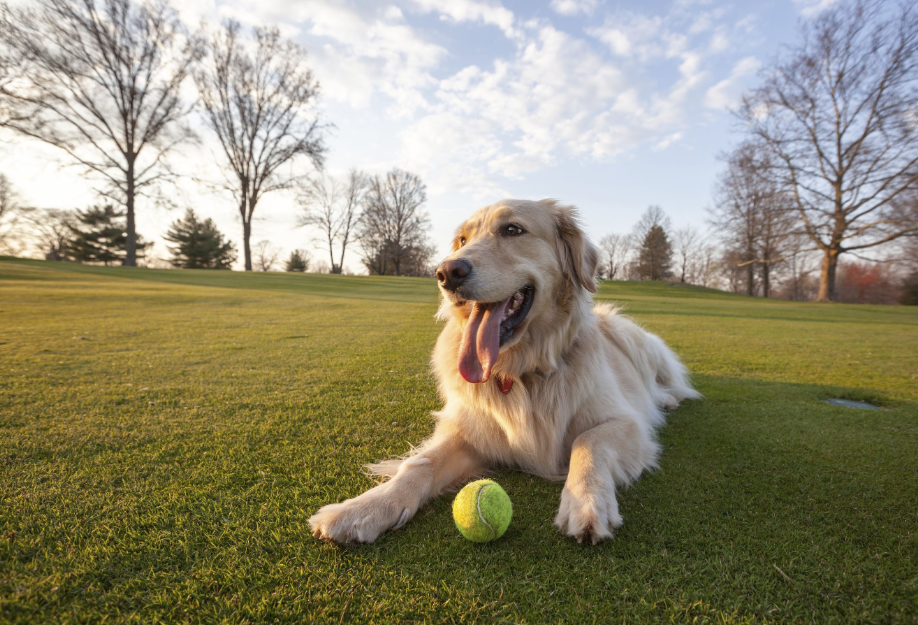
But how travel and leave the dog aloneIf you're a dog owner who loves to travel, it can be difficult to decide what to do with your pet when you're away. Leaving your dog alone, especially for long periods, can be stressful for both you and your pet. In this section, we'll share some practical tips to help ensure your dog stays safe and comfortable while you're traveling.
Main points covered:
- Prepare the environment where the dog will stay before traveling
- Find a reliable caregiver
- Familiarize your dog with your absence gradually
- Provide toys and distractions for your dog.
- Establish a regular routine for your dog while you're away.
Preparing the environment
Before traveling, it's important to prepare your dog's environment. This includes ensuring they have access to fresh water, plenty of food, and a comfortable place to rest. Additionally, there are a few other things to consider to ensure your pet is safe and comfortable while alone.
Restricted area
Define a designated area for your dog to stay in while you're away. You can use a designated room or a fenced-in area. Make sure the area is safe and free of dangerous objects, such as electrical cords, cleaning products, and toxic plants. Provide toys and familiar objects to make your dog feel more comfortable.
Access to external areas
If you live in a home with an outdoor area, it's important to ensure your dog doesn't have access to dangerous areas, such as swimming pools or places where he could get hurt. Make sure the fence is in good condition and the area is safe before leaving him alone.
Thermal comfort
Make sure the room temperature is comfortable for your dog. On hot days, make sure the area where he'll be kept has adequate ventilation and fresh water available. On cold days, provide blankets and a place protected from wind and moisture.
Emergency plan
Have an emergency plan in case something happens while you're traveling. Leave contact information for your veterinarian and a trusted person who can care for your dog if needed. Make sure this person is available to be contacted.
Find a reliable caregiver
If you are worried about leaving your dog alone while traveling, finding a reliable caregiver can be a good option. It is It is important to research well and choose someone you trust to care for your pet while you are away.

Caregiver options
There are several caregiver options to choose from, depending on your dog's needs:
| Caregiver Type | Description |
|---|---|
| Family member or friend | Someone close to the family who can care for the dog at their home or yours. |
| Professional caregiver | Someone who works as a pet sitter and can care for your dog at home or at a daycare center. |
| Pet sitter | Someone who can visit your home to care for your dog and ensure he or she gets regular food and walks. |
Regardless of the option you choose, it's important to interview and meet the caregiver before leaving your dog with them. Make sure they have experience and know how to handle any special needs your pet may have.
Care when choosing a caregiver
Before leaving your dog with a sitter, make sure that he or she:
- Have experience with pet care;
- Has reliable references;
- Has basic training skills to deal with unwanted behaviors;
- It has a safe and comfortable space for the dog;
- Has knowledge of first aid for animals in case of an emergency.
By finding a trustworthy caregiver, you can enjoy your trip with peace of mind, knowing that your dog is being properly cared for.
Familiarize your dog with absence
Once your dog is used to spending time with you, it can be difficult to leave him alone at home. To ensure he's comfortable while you're away, it's important to gradually get him used to your absence.
Start with short outings throughout the day and gradually increase the time. Leave your dog alone in a safe, familiar environment, with toys and distractions available.
Remember that dogs are creatures of habit. They can feel anxious when their routine is disrupted or when their owner isn't around.– Animal behavior specialist
When leaving your dog alone, create a consistent routine, with regular times for feeding, walking, and play. This will help your dog feel more secure and comfortable in your absence.
Proper training can also help prepare your dog for being alone. Teach him to calm down and entertain himself with interactive toys that stimulate his mind and body.
By familiarizing your dog with your absence, you're ensuring your dog is safer and happier while you're away. Use these tips and adjust them to suit your pet's needs.

Toys and distractions to keep your dog alone
Leaving your dog home alone can be stressful for both you and your pet. But with a few toys and distractions, you can keep your dog more relaxed and entertained while you're away. Check out some options:
Toys stuffed with snacks
Stuffed toys are a great way to keep your dog occupied while you're away. They can be found at pet stores or made at home. To make them, simply place your pet's favorite treats inside a toy with an opening. This encourages your dog to focus on the toy and keeps them entertained for longer.
Interactive games
Interactive games are a fun way to stimulate your dog and keep their mind engaged. Games that require movement and skill, such as fetching or catching treats from cups, can be great options to keep them entertained. Additionally, there are several board games available with varying levels of difficulty that can be played alone or with the owner.
The right toy
Not all toys are suitable for all dogs. Some pets may be more interested in rubber toys, while others prefer soft toys. It's important to consider your dog's preferences and choose the right toy for them. Also, make sure to provide safe, durable toys to prevent accidents.
Snack break
Leaving a treat or a piece of healthy meat like carrots or broccoli can also help distract your dog while you're away. Leave the treat in a specific, easily accessible location so your dog can retrieve it and stay entertained for a while.
Toy turnover
Just like us, dogs can get bored with the same toys. To keep your pet interested, it's a good idea to rotate toys regularly. For example, leave one set of toys available for a week and then switch to another set. This increases variety and novelty, making the experience of being home alone more interesting for your pet.
Establish a routine
Maintaining a consistent routine for your dog while you're away can help reduce anxiety. Set regular times for feeding, walks, and playtime to provide your pet with a sense of security.
To establish an effective routine, consider your dog's age, breed, and individual needs. For example, a puppy will require more attention and care than an adult dog. Additionally, small breed dogs may require less exercise than larger breeds.
A daily routine for a single dog might look something like:
| Time | Activity |
|---|---|
| 7am | Morning walk and food |
| 9am | Toys and distractions |
| 12pm | Tour and food |
| 3pm | Toys and distractions |
| 6pm | Tour and food |
| 9pm | Toys and distractions |
Always maintain a consistent schedule for daily activities, avoiding sudden changes that could cause anxiety in your dog. With a set routine, your dog will have structure and a sense of security while you're traveling.

Home Security
Before traveling, it's important to ensure your home is safe for your dog. Make sure there are no dangerous objects within reach and secure areas where your dog shouldn't be able to access them. Since every dog is unique, it's crucial to tailor your dog's safety measures to their individual needs.
Block dangerous areas
When leaving the house, make sure your dog doesn't have access to dangerous areas, such as the pool, garden, or laundry room. Use gates, doors, or barriers to prevent access to areas that could pose a safety risk.
Remove dangerous objects
Keep your dog out of reach of objects that could become dangerous when he's home alone. This includes cleaning products, electrical cords, toxic plants, and small objects he could swallow.
Prepare a comfortable space
Ensure your dog has a comfortable space to rest while you're away. Provide a soft bed, blankets, and toys to keep him entertained.
Install security cameras
If possible, install security cameras to monitor your dog's behavior while you're away. This allows you to ensure he's safe and happy while you're away.
Check windows and doors
Before leaving home, make sure your windows and doors are closed and locked. This prevents your dog from escaping or strangers from entering the house.
Contact and Monitoring of the Dog During Travel
Even when you're away, it's important to stay in touch with your dog and monitor how he's doing in your absence. This can help reduce his anxiety and ensure he's safe and comfortable at home. Here are some tips:
- Calls and video calls: Use technology to your advantage and call or video chat with your dog while traveling. This can help him feel closer to you and reduce stress.
- Monitoring cameras: If possible, install surveillance cameras in your home so you can keep a close eye on your dog. There are several affordable camera options on the market, and they can be a great monitoring tool.
“Keeping in touch with your dog while traveling can help reduce their anxiety and ensure they are safe and comfortable at home.”
Proper training to leave your dog alone
When leaving a dog home alone for long periods, it's crucial to ensure they've received proper training to prevent unwanted behavior and ensure they're prepared for their owner's absence. Here are some tips:
- Getting used to loneliness: Before leaving your dog home alone for long periods, it's essential to gradually get him used to your absence. Start with short outings and gradually increase the time until he feels comfortable being alone.
- Teaching basic commands: Teach basic commands, like “stay” and “sit,” so your dog will obey your instructions, even when you’re not there.
- Discouraging unwanted behaviors: When training your dog to stay home alone, discourage unwanted behaviors like excessive barking and destruction. Use positive training to reinforce appropriate behaviors.
- Providing appropriate activities: Leave interactive toys and games available for your dog while you're away. This will help keep your pet entertained and happy.
- Gradually increasing alone time: Gradually increase the amount of time your dog is left alone at home. If he's used to being alone for an hour, try increasing it to two hours. Continue increasing the time gradually until he can be alone for longer periods without showing signs of anxiety.
Tips for proper training
Here are some additional tips for ensure proper training to leave the dog alone:
"When training your dog to stay home alone, always remember to reinforce positive behaviors with lots of patience and affection. Be sure to celebrate each achievement and remember that every dog is unique and may respond differently to training."
Ensuring your dog has received proper training is an important way to ensure they're safe and comfortable while you're away. With proper training and proper environment preparation, you can be sure your pet will be in good hands, even while you're away.
Check with a veterinarian to ensure your dog's health on your own.
Before travel and leave your dog alone At home, it's important to schedule an appointment with a trusted veterinarian. The professional can assess your pet's health and provide specific guidance based on their needs.
The veterinarian can, for example, recommend an appropriate diet and establish a vaccination and deworming program. They can also provide guidance on administering medication if necessary. It's important to follow all of your veterinarian's instructions to the letter to ensure your dog's health during your absence.
Prior check-up
Before your vet appointment, it's important to have your dog's medical history ready, including vaccinations, medications, and any pre-existing conditions. This information can help the veterinarian assess your pet's health and provide appropriate guidance.
Disease prevention
In addition to assessing your dog's health, your veterinarian can advise you on how to prevent disease while you're away. They may, for example, recommend measures to prevent the spread of fleas, ticks, and other parasites, which can cause disease in dogs.
Specific care
If your dog has any pre-existing conditions or requires specific care, it's important to inform your veterinarian during your appointment. They can advise you on special care that should be taken to ensure your pet's health during your absence.
Scheduling an appointment with a veterinarian can help ensure your dog's health while you travels and he is alone at home. Be sure to follow all the professional's instructions and inform them of any health problems your pet may have. With proper care, it is possible travel peacefully and leave your dog alone at home.
Attitudes to avoid with a dog alone
While you're away, it's important to avoid behaviors that could make your dog stressed or anxious. Here are some things to avoid:
- Don't punish your dog harshly if he does something wrong while you're away. This can cause fear and anxiety in the animal.
- Avoid sudden changes in routine. Maintain a consistent schedule for feeding, walks, and playtime.
- Don't leave your dog alone for long periods without any supervision. Make sure he has enough fresh water and food, as well as a comfortable place to rest.
- Don't leave dangerous objects within your dog's reach. Make sure your home is safe for your dog.
- Don't go long periods without contacting your dog. Make phone calls or video calls to reassure him.

Conclusion
By following the tips mentioned in this article, you can plan a trip and leave your dog alone safely. It's important to remember that every dog is unique and may react differently to their owner's absence, so adjust these tips according to your pet's needs.
Preparing the environment, finding a reliable caregiver, familiarizing your dog with your absence, providing toys, and establishing a routine are some of the measures that can help ensure your pet's safety and comfort while you're away.
Be careful about behaviors that could cause stress or anxiety in your dog while he's alone. And remember to always consult a veterinarian before traveling to ensure your dog is in good health and well cared for.
With proper planning, it is possible travel and leave your dog alone with peace of mind. Ensure your dog has a safe environment and feels comfortable while you're away. With these tips, your dog will be happy and safe, and you can enjoy your trip with peace of mind.
FAQ
How do I prepare the environment to leave my dog alone?
Before traveling, it's important to ensure your dog has access to fresh water, enough food, and a comfortable place to rest.
What should I do if I don't want to leave my dog alone?
One option is to find a reliable pet sitter who can care for your pet while you're away. Do your research carefully and choose someone you trust to ensure your pet's well-being.
How do I familiarize my dog with my absence?
It's important to gradually accustom your dog to your absence before traveling. Take short trips and gradually increase the time away so your dog gets used to being alone.
What toys can I leave for my dog to keep him entertained while I'm away?
Provide toys and distractions for your dog, such as treat-stuffed toys or interactive games that stimulate your pet.
Is it important to establish a routine for my dog while I'm away?
Maintaining a consistent routine for your dog can help reduce anxiety. Set regular times for feeding, walks, and playtime to provide your pet with a sense of security.
How can I ensure my home is safe for my dog?
Before traveling, make sure your home is safe for your dog. Make sure there are no dangerous objects within his reach and secure areas he shouldn't access.
How do I keep in touch with my dog while traveling?
Stay in touch with your dog during the trip, whether by phone or video call, to reassure them and check on how they're doing in your absence. Use surveillance cameras if possible.
Does my dog need training before being left alone?
Yes, it's important that your dog has undergone proper training before being left alone for long periods. This will help prevent unwanted behaviors and ensure your dog is prepared for their owner's absence.
Is it necessary to consult a veterinarian before traveling?
Before traveling, it's recommended to schedule a veterinarian appointment to ensure your dog is in good health. The veterinarian can provide specific guidance based on your pet's needs.
What behaviors should I avoid when leaving my dog alone?
Avoid harsh punishments, sudden changes in routine, or leaving your dog alone for long periods without any care, as this can cause stress or anxiety in your pet.
Lucas Wanderlust has a tireless spirit of adventure, always seeking new travel experiences. Fascinated by the world and the possibility of exploring unknown destinations, he fell in love with the sense of freedom and self-discovery that traveling alone provides. With a backpack on his back and a heart open to the unknown, Lucas embarks on exciting journeys, where each destination becomes a unique chapter in his life story. He gives himself body and soul to the magic of solo travel, inspiring others to follow in his footsteps and discover themselves through adventure.







